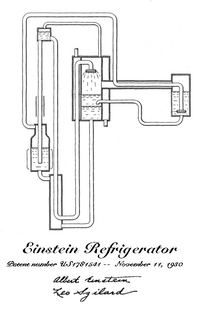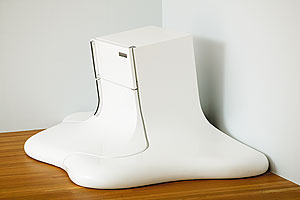Every gardener gets to the point where the produce is overwhelming. I am not even talking about having more garden than you need. I mean I DO have more garden than I need BUT even one zucchini plant can fill a bushel basket towards the end of the season. Even a few tomato plants can leave you with a pile every week. It is the damnedest thing too, you can’t give them away because everyone else has the same problem…well you caaaan give them away but more about that later because it is kinda beside the point.
We are planting this garden to save energy. That is because corporate america has forced a food system down our throats that literally has us drinking oil (processing and transportation) for inferior food products. The additives alone consume enough energy to power America for years. What does that have to do with my produce? Fall will fall and winter will set in and then where are you going to get your produce from? That’s right the freedom from the corporate foodchain evaporates as you trudge back to the store dreaming of those green beans you gave to your mom. Who love’s yah now baby? So we need a way to store this produce until we need it. Basically we have to combat rot:
:}
Yes that is right just like poop, rot is stinky stuff that is hard work. But rot is our friend when it comes to poop on the garden and our compost pile. Rot here is bad though. There are many ways to combat food rot, that is to preserve the food until you need it later. You can dry, cook, or chill your food and that will slow down the mold and bacterial processes that degrade your food. Basically what we are talking about is securing the nutrients.
The Oldest method of preserving food is to dry it. This was brought home to me when my wife went mushroom hunting last spring. She took one of my string bags with her. Months later I used the bag for something else and this cute little morel fell out and hit the floor. It was perfectly preserved and hard as a rock. I guarantee that if I put it in water it would reconstitute a mushroom fit for cooking. The fancy pants phrase for taking the water out is dehydrating and the 37$ phrase for putting the water back is reconstituting or re-hydrating even worse. I prefer solar drying. The ingenuity of this is it is solar inputs (growing the food) and solar outputs (preserving the food). Not a drop of oil is spilled.There is a loss of nutritional value and taste/palatability in this or any preservation process, though there are some herbs that are actually better dried.
:}
http://www.budget101.com/dehydrated_foods.htm
Drying is the oldest method of preserving food. The early American settlers dried foods such as corn, apple slices, currants, grapes, and meat. Compared with other methods, drying is quite simple. In fact, you may already have most of the equipment on hand. Dried foods keep well because the moisture content is so low that spoilage organisms cannot grow.
Drying will never replace canning and freezing because these methods do a better job of retaining the taste, appearance, and nutritive value of fresh food. But drying is an excellent way to preserve foods that can add variety to meals and provide delicious, nutritious snacks. One of the biggest advantages of dried foods is that they take much less storage space than canned or frozen foods.
Recommended methods for canning and freezing have been determined by research and widespread experience. Home drying, however, does not have firmly established procedures. Food can be dried several ways, for example, by the sun if the air is hot and dry enough, or in an oven or dryer if the climate is humid.
With the renewed interest in gardening and natural foods and because of the high cost of commercially dried products, drying foods at home is becoming popular again. Drying is not difficult, but it does take time and a lot of attention. Although there are different drying methods, the guidelines remain the same.
Although solar drying is a popular and very inexpensive method, Illinois does not have a suitable climate for it. Dependable solar dehydration of foods requires 3 to 5 consecutive days when the temperature is 95 degrees F. and the humidity is very low. The average relative humidity in central Illinois on days with 95 degrees F. temperatures is usually 86 percent. Solar drying is thus not feasible.
http://www.motherearthnews.com/Real-Food/2003-06-01/Choosing-a-Food-Dehydrator.aspx
DAVID CAVAGNARO
Home-food dehydrators fall into two categories: those with stackable trays, and those constructed of a rigid box with removable shelves. Size is a factor; most fit on a countertop, but larger models are free-standing and require more space. Some models have base-mounted fans that move hot air vertically; one has a rear-mounted fan for moving air horizontally; yet another uses convection drying, with no fan at all.
I put these four different models through their paces during the peak of the humid harvest season here in Iowa. Each dehydrator dried lots of herbs and vegetables with comparable ease, but the fleshy crops, like tomatoes and peaches, put the dehydrators to the ultimate test, determining their maximum capacity, efficiency and overall effectiveness.
(dotdotdot)
All of the dehydrators I tested have their appropriate applications, and all performed well under most conditions. Determine your needs, space limitations and budget before you buy. When it comes down to preserving food flavors and quickly drying fruits, vegetables and meats, especially when fully loaded and under humid conditions, the Excalibur Large Garden model won my highest praise. Its rear-mounted fan, in my experience, simply did the best job.
:}
There are some special concerns with fruit:
Food Drying Principles
Dehydrating your own produce does require time and some knowledge of food drying principles.
Preparation
- Select the best fruit and vegetables! As with canning and freezing, dehydrated foods are only as good as the fresh fruit or vegetables. When selecting fruits and vegetables for dehydration, choose ones that are ripe, unbruised and at peak-eating quality.
- Prepare foods to be dehydrated as you want them to be served. Apples, for example, may be sliced, cut into rings, or pureed for fruit leather.
- Keep pieces uniform in size and thickness for even drying . Slices cut 1/8 to 1/4-inch in thickness will dry more quickly than thicker pieces.
- Some foods should be washed before drying. Foods such as herbs, berries and seedless grapes need only be washed before dehydrating.
After Drying (for fruit only)
- Allow dried FRUIT (not vegetables) time to “condition”: When dry, allow fruit to “condition” for four to 10 days before packaging for storage. The moisture content of home dried fruit should be about 20 percent. When the fruit is taken from the dehydrator, the remaining moisture may not be distributed equally among the pieces because of their size or their location in the dehydrator. Conditioning is the process used to equalize the moisture. It reduces the risk of mold growth.
- To condition the fruit, take the dried fruit that has cooled and pack it loosely in plastic or glass jars.
- Seal the containers and let them stand for 7 to 10 days. The excess moisture in some pieces will be absorbed by the drier pieces.
- Shake the jars daily to separate the pieces and check the moisture condensation. If condensation develops in the jar, return the fruit to the dehydrator for more drying.
- After conditioning, package and store the fruit as described below.
:}
Now you know why they call it dry wine….












